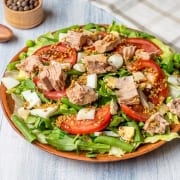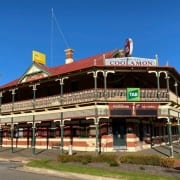THE GROWING TREND FOR COFFEE IN COCKTAILS
It was at Soho Brasserie in 1983 where the universally loved espresso martini was born. It was created by Dick Bradsell, a titan of the bar industry whose original ‘Vodka Espresso’ was made up of vodka, coffee liqueur, sugar and shot of espresso.
Dick Bradsell’s influence on the cocktail culture – not just of London, but around the world – cannot be overstated. His New York Times obituary describes him as “the father of the cocktail revival” with his legacy taking hold in 1990s London and continuing over two decades later.
“By the turn of the century,” it continues, “his influence was felt not just in London but throughout Britain and as far away as Australia, thanks to bartenders who were either trained by him directly or inspired by his cocktail creations.”
Nearly 40 years since its creation in 1983, the Vodka Martini has reached the giddy heights of many a most-popular-cocktail lists, available to order at the best bars in the world.
Out of the shadows
For a trustworthy source of information on the past, present and future of coffee in cocktails, Martin Hudak – brand ambassador for all-conquering Australian coffee liqueur Mr Black, as well as proprietor for some of Australia’s best bars, such as Maybe Sammy – is a good place to start. “We’ve seen a huge trend where coffee is more and more respected and appreciated by professionals,” he says. “More venues are adding more coffee cocktails to their drinks lists to diversify their menu and be slightly different.”
When it comes to coffee cocktails, Hudak is – currently – the oracle, having just published his book dedicated to the mighty bean and its use in drinks, Spiritual Coffee. “In the beginning of the first lockdown, I had spare time to research and delve deep into well-known coffee cocktails,” he explains, “but there were so many different stories and information that wasn’t trustworthy enough. I always knew there was much more to coffee cocktails than what we know, but till now there hasn’t been a tangible publication where you could find it all. From their history to the present and future, I wanted to write the first bible of coffee cocktails.”
Another historic coffee cocktail that’s been popping up in recent years, though, is the Irish coffee, usually a mix of booze, coffee and sweetener, served hot with a floated cream top, but with innumerable subtle variations. “It’s weird to say it’s a trendy drink, but Irish coffees are definitely growing,” says Bea Bradsell.
Classic curveballs
But what about using coffee in the non-coffee classics? Well, who better to ask than the 2018 & 2019 World Coffee in Good Spirits Champion, Dan Fellows, who has a Youtube channel (Dan Fellows Coffee Cocktails) where he showcases coffee in myriad cocktails. “Pretty much any classic cocktail can pair well with coffee, because coffee itself can bring so many different flavours to the table,” he explains.
“If we take the old fashioned’s loose template as a starting point [whisky, sugar, bitters] imagine adding a coffee that tastes of pineapple and toasted coconut and pairing that with a tropical, toffee and banana-forward rum cask whisky, or a coffee that tastes like strawberry and blood orange paired with a big, vanilla-forward bourbon.” This is a good place to point out that like spirits, different coffees can, of course, present different and nuanced flavour profiles, from fruity and earthy to citrus and much, much more. “Whatever cocktail you love, think about what sort of flavours would complement them and consider choosing a coffee that brings these characteristics,” he adds.
“Remember that coffee doesn’t always have to be the dominant flavour; even a very small amount can bring amazing complexity to a drink.” Hudak agrees, namechecking drinks like the Coffee Negroni and a Cold Fashioned as examples of where coffee can be used in the classics. It’s something that café and bar group Grind showcases on its booze menu, with a five-strong section dedicated to coffee cockails. Its Espresso Old Fashioned adds its house blend syrup to Wild Turkey bourbon and Angostura bitters; while its Coffee Negroni mixes Grind filter coffee with East London Liquor Company gin, Campari, vermouth and orange.
Brew it yourself
Of course, leaving it to the pros is one option, but if you want to experiment at home, there are plenty of easy cocktails that can be reproduced with careful attention to ingredients. For Hudak, where your coffee is from is paramount. “Make sure you know where your coffee is coming from and when it was roasted,” he advises. “Freshness is very important as it will reflect the final taste. Focus on 100% speciality grade arabica coffee, roasted lightly by your local cafe or roastery.
Try to have conversations with baristas and ask them for advice on how to grind it and brew it at home if you want to achieve specific results. Once you have coffee at home, store it in an airtight container as oxygen is the biggest enemy for freshness of your coffee.”
Bea Bradsell is in favour of mixing coffee with tonic – a drink that’s big in Australia and a nice idea for those after something non-alcoholic. Byrne suggests something like a coffee corretto, an Italian drink using a shot of espresso with a spirit like grappa or brandy, or even in a whisky highball with some sugar and a slice of orange.
However, you drink it, whether you’re enjoying an Irish coffee at The George, an espresso martini at All Bar One, or playing around at home, one word of advice: give a toast to Dick Bradsell and his ingenuity for making coffee cocktails cool again and unlocking a world of flavour.
Source: Bean to glass: An exploration of coffee in cocktails | Foodism









